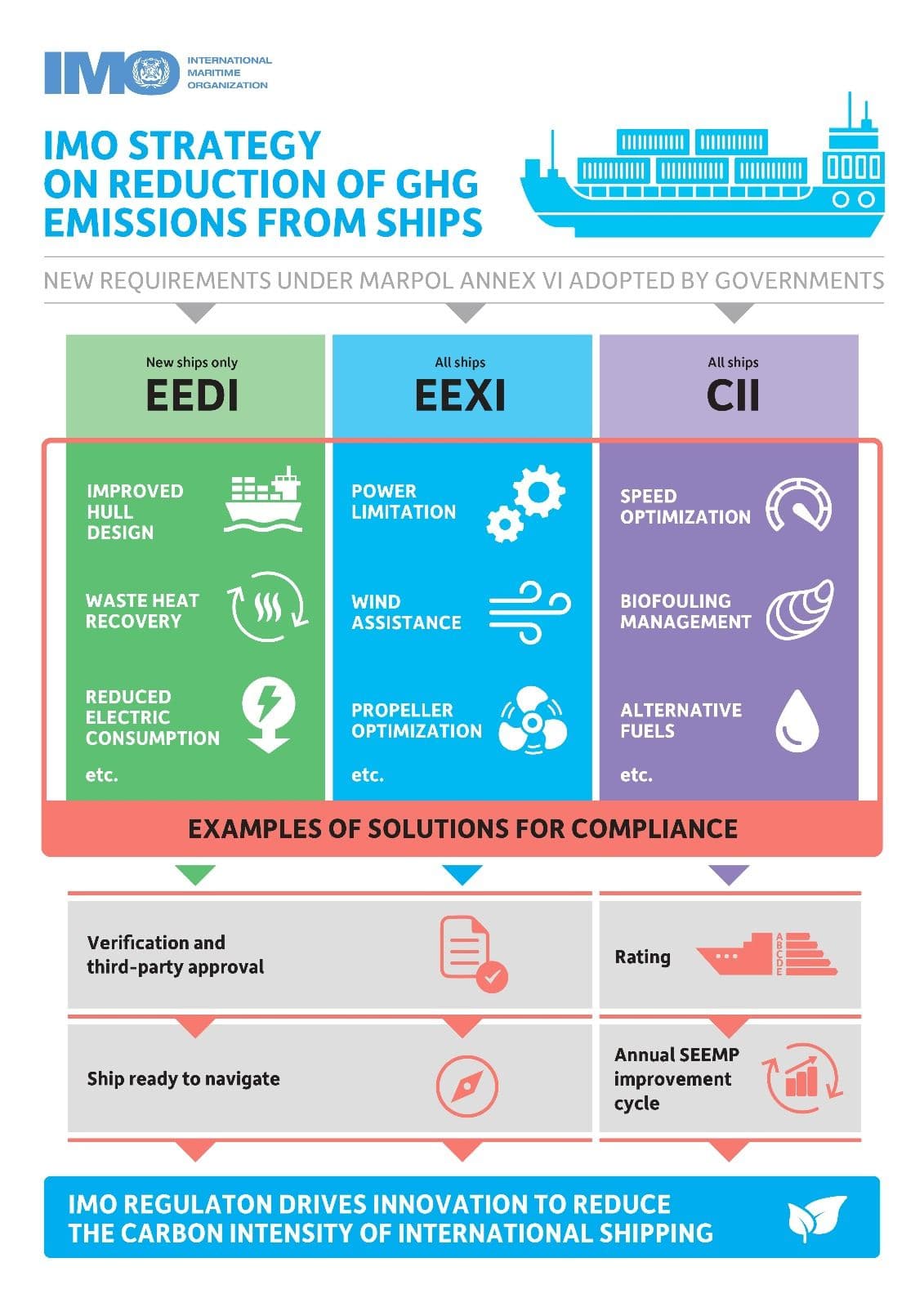EEXI and CII - SHIP CARBON INTENSITY AND RATING SYSTEM

As a stimulus to reduce carbon intensity of all ships by 40% by 2030 compared to 2008 baseline, ships are required to calculate two ratings: their attained Energy Efficiency Existing Ship Index (EEXI) to determine their energy efficiency, and their annual operational Carbon Intensity Indicator (CII) and associated CII rating. Carbon intensity links the GHG emissions to the amount of cargo carried over distance travelled.
When did the measures come into force?The amendments to MARPOL Annex VI entered into force on 1 November 2022. The requirements for EEXI and CII certification came into effect on 1 January 2023. The first annual reporting is to be completed in 2023, with initial ratings given in 2024.
The measures are part of IMO's commitment under its 2018 Initial Strategy on Reduction of GHG Emissions from Ships to reduce carbon intensity from all ships.
The 2023 IMO GHG Strategy calls for carbon intensity of the ship to decline through further improvement of the energy efficiency for new ships - to review with the aim of strengthening the energy efficiency design requirements for ships; and for carbon intensity of international shipping to decline - to reduce CO2 emissions per transport work, as an average across international shipping, by at least 40% by 2030, compared to 2008.
The overall ambition is to reach net-zero GHG emissions by or around, i.e. close to, 2050.
A review of the measures is to be completed by 1 January 2026.
A ship's attained EEXI indicates its energy efficiency compared to a baseline. The attained EEXI will then be compared to a required Energy Efficiency Existing Ship Index based on an applicable reduction factor expressed as a percentage relative to the Energy Efficiency Design Index (EEDI) baseline. It must be calculated for ships of 400 gt and above, in accordance with the different values set for ship types and size categories. The calculated attained EEXI value for each individual ship must be below the required EEXI, to ensure the ship meets a minimum energy efficiency standard.
The CII determines the annual reduction factor needed to ensure continuous improvement of a ship's operational carbon intensity within a specific rating level. The actual annual operational CII achieved must be documented and verified against the required annual operational CII. This enables the operational carbon intensity rating to be determined.
How do the ratings work?Based on a ship's CII, its carbon intensity is rated A, B, C, D or E (where A is the best). The rating indicates a major superior, minor superior, moderate, minor inferior, or inferior performance level. The performance level is recorded in a "Statement of Compliance" to be further elaborated in the ship's Ship Energy Efficiency Management Plan (SEEMP).
A ship rated D for three consecutive years, or E for one year, has to submit a corrective action plan to show how the required index of C or above will be achieved.
A ship run on a low-carbon fuel can clearly get a higher rating than one running on fossil fuel, but there are many things a ship can do to improve its rating, through measures such as:
- hull cleaning to reduce drag;
- speed and routeing optimization;
- installation of low energy light bulbs; and
- installation of solar/wind auxiliary power for accommodation services.
Administrations, port authorities and other stakeholders as appropriate, are encouraged to provide incentives to ships rated as A or B.
How do the measures fit into IMO's decarbonization strategy?The introduction of mandatory EEXI and CII comes under the framework of the Initial IMO Strategy for Reduction of GHG Emissions from Ships, adopted in 2018. The Initial Strategy set out candidate short- mid- and long-term measures.

